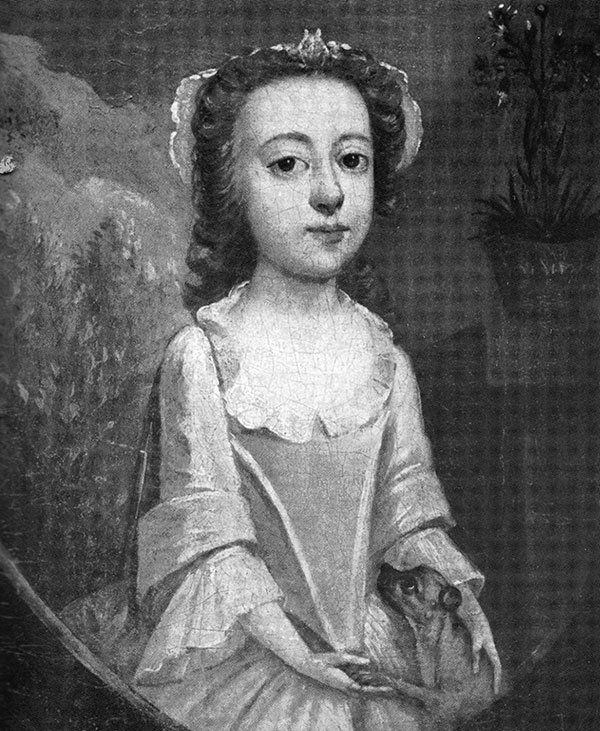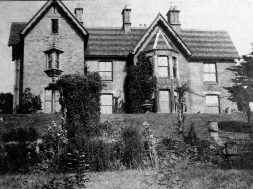Lost Houses of Derbyshire – Chesshyre’s House, Derby

The Chesshyre family has been amongst the elite tradesmen of Derby since the beginning of the seventeenth century, when brothers Robert and John Cheshire, sons of a Breadsall farmer, set up in business in the town. John (1613-1689) was Mayor in 1680 and left descendants in the town, as did Robert (1602-1673) who was a lawyer. He married Isabella Blood and had four sons and a daughter, of whom Samuel was Mayor of Derby as well, taking the post only a decade after his uncle.
The third son was Gilbert Chesshyre mercer and gentleman, who in 1696 married an heiress of considerable fortune, Catherine, daughter of Revd. Thomas Meynell of Langley, of which place he was both rector and lord. With the death of his grandson in 1758, his estate was split nine ways, two parts coming to the descendants of the marriage. The family were well established in the parish of St. Werburgh, but Gilbert and Catherine, determined to have a new house, chose a plot – possibly close to the family’s previous residence – on the corner of Friar Gate and Ford Street. The house was probably begun at the time of their marriage, although to subsequent generations of Derby residents it was known as The Queen Anne House. Its first known appearance on record, however is in a document of 1702.
This new house, no. 25, Friar Gate, was exceedingly handsome and well proportioned, and represented the finest quality money could buy in late seventeenth century Derby. Had it survived it would probably have been listed Grade II*. It was of brick, three storeys, and five bays wide under a hipped roof. It was a building of some architectural pretension with stone dressings: quoins, bolection moulded architrave surrounds to the windows, punctuated with keyblocks. The central entrance was embellished by grooved rusticated sweeps, Doric columns and a modillion frieze. The roof was also supported on modillions and was crowned by impressive cruciform-plan stacks. Indeed, the style resembled a mature development of Franceys’ House in Market Place and may well have been by the same (unknown) hand.
Nor do we know anything of the interior, bar the fact that there was a timber staircase with turned balusters on a string, fielded panelling (which extended to the main rooms) and chimneypieces carved from local polished limestones. Franceys’s house boasted a frescoed ceiling by Francis Bassano, so it would not be beyond the bounds of possibility that this house boasted something along the same lines. There was also a garden extending down to the Markeaton Brook by Willow row (then still so embowered) and a fine wrought iron railing protected the street front from the vicissitudes of Derby Football.

The couple’s only son was another Gilbert who, with his two sisters, inherited a portion of Langley in 1758. Born in 1694, he managed to acquire a small landed estate west of Radbourne and thus described himself as ‘of Dalbury Lees, Esq.’. He was a colonel in the militia raised by the 3rd Duke of Devonshire to oppose the southward progress of Bonnie Prince Charlie in the autumn of 1745. His reward was the high shrievalty in 1759, shortly after he inherited his share of the Langley estate. However, in 1761 he disinherited his surviving son (who died unmarried in 1764) and died eighteen months later. He had married in 1720 Dorothy Beighton of Crich, and in 1744 clearly decided to improve the roof, installing fresh rainwater goods including a lead hopper clearly monogrammed:
At the same time, a Robert Bakewell side gate was installed to allow access past the west side of the house into the garden. It is close in design to that at Tissington Hall, datable to the same period. In 1938, this ended up in the museum, but presents a problem, for the coat-of-arms on it read oddly. The cast crest of an unicorn’s head erased collared and chained is fine, and may relate to the unofficial arms used by the Chesshyres, but the original shield has been at some stage removed and replaced by a thin iron confection looking like an incandescent light bulb, bearing the device vert on a chevron between three stags statant or as many trefoils slipped gules. Since I have known it, this has been tinctured to conform with the arms of Robinson of Yorkshire, but these may not have been the original colours. Presumably the shield was changed after the Chesshyres and Cheneys left.
At Gilbert’s death his three parts of the Langley estate was re-divided between his daughters Dorothy and Catherine. The latter died unmarried in 1764, leaving her entire estate, including the Dalbury Lees land and a single part of Langley, to a close friend – how close in not clear, but she was only 22 when she inherited from her father – Dr. Philip Gell, who was her tenant at Kirk Langley. His son, by Honor Borough of Castlefields, was another Philip who, in 1789, on the death of a relative, inherited thereby another half of a third of Langley.

Meanwhile Catherine’s elder sister Dorothy inherited the Derby house and in 1753 married a neighbour, Henry Peach of Full Street, who died in 1758. By Peach she had six children, one born posthumously and including a pair of twins. Three years later, by now the inheritor of her portion of Langley she married Robert Cheney, by whom she had a son, Robert, born 1766. She lived in the family’s house in Derby with Peach, but two years into her second marriage she inherited her portion of Langley, which happened to include the hall, into which they moved, and where Cheney lived until his own death in 1809.
At this stage the impressive Derby house descended to Cheney’s eldest son, Maj. Gen. Robert Cheney (1766-1820), whilst Langley Hall was inherited by Dorothy’s eldest son by Henry Peach, also Henry (1754-1833), a clergyman who had married the niece and co-heiress of Derby’s eminent Lunar Society co-founder, John Whitehurst, FRS.
The Derby house was sold in 1820 to its tenant, Mrs. Harriet Bateman, from whom it passed in the 1830s to a surgeon, John Jones, who was succeeded by his accountant son, Joseph in 1849. In 1874 it was the home and office of attorney Francis Bassano, son of a musical family from Italy recruited to the King’s band by Henry VIII and long resident in Derby. An ancestor had been the artist who had painted Alderman Franceys’s ceiling in the saloon of his Market Place House. He let part of the house off as a flat, occupied for over twenty years by A J (Jack) Keene, the water-colourist son of photographer Richard Keene.
After the Bassanos, it became the St. Werburgh Church Institute, but in 1912 it was let to a Mr. Horridge and after him to dentist Gilbert Hunt. By 1933 it had become empty as it had been earmarked for demolition to widen Ford Street, standing empty for some time prior to demolition on 29th March 1938. The late Rosemary Meynell, who had been inside the house in her youth (hence our scanty knowledge of the interior) maintained that there had been a move to have the house dismantled carefully and shipped to colonial Williamsburg, in the USA, for re-erection. If so, the war put paid to what would have been a much happier conclusion.
The irony of it all is that today, the site remains largely empty, the street not widened on that side to have necessitated its removal. Since 1938 the place where stood this splendid house has been nothing more than an unsightly car-park.


